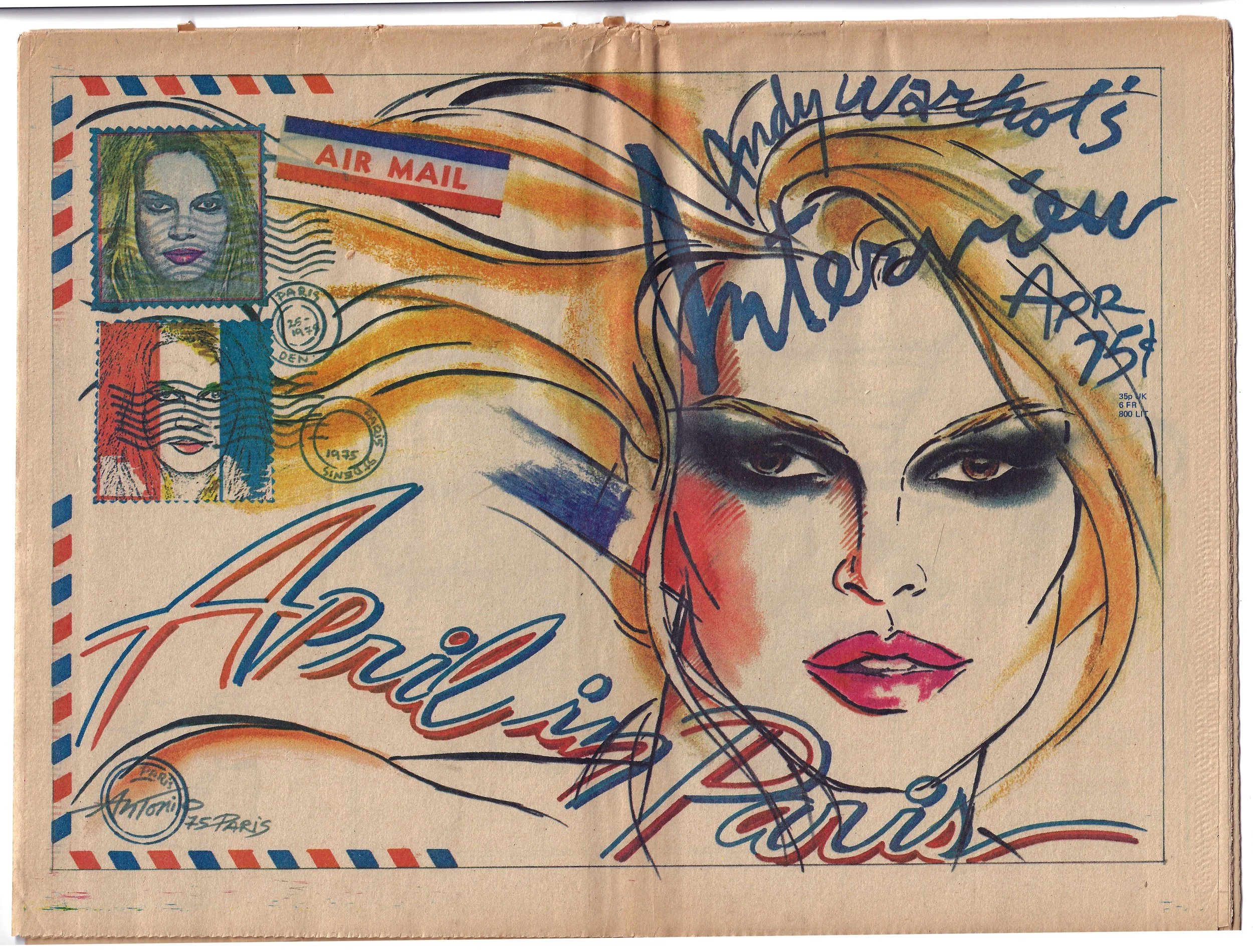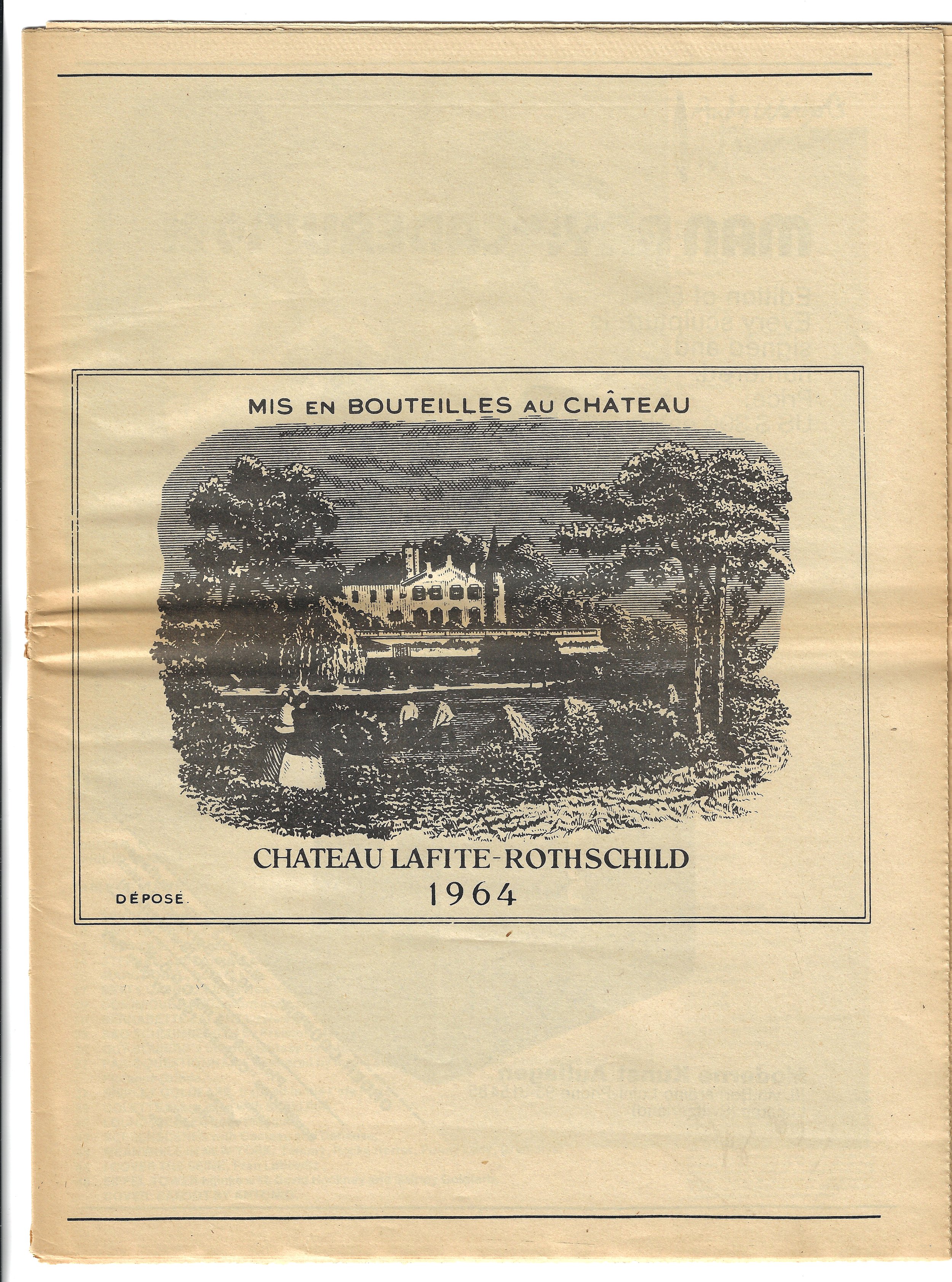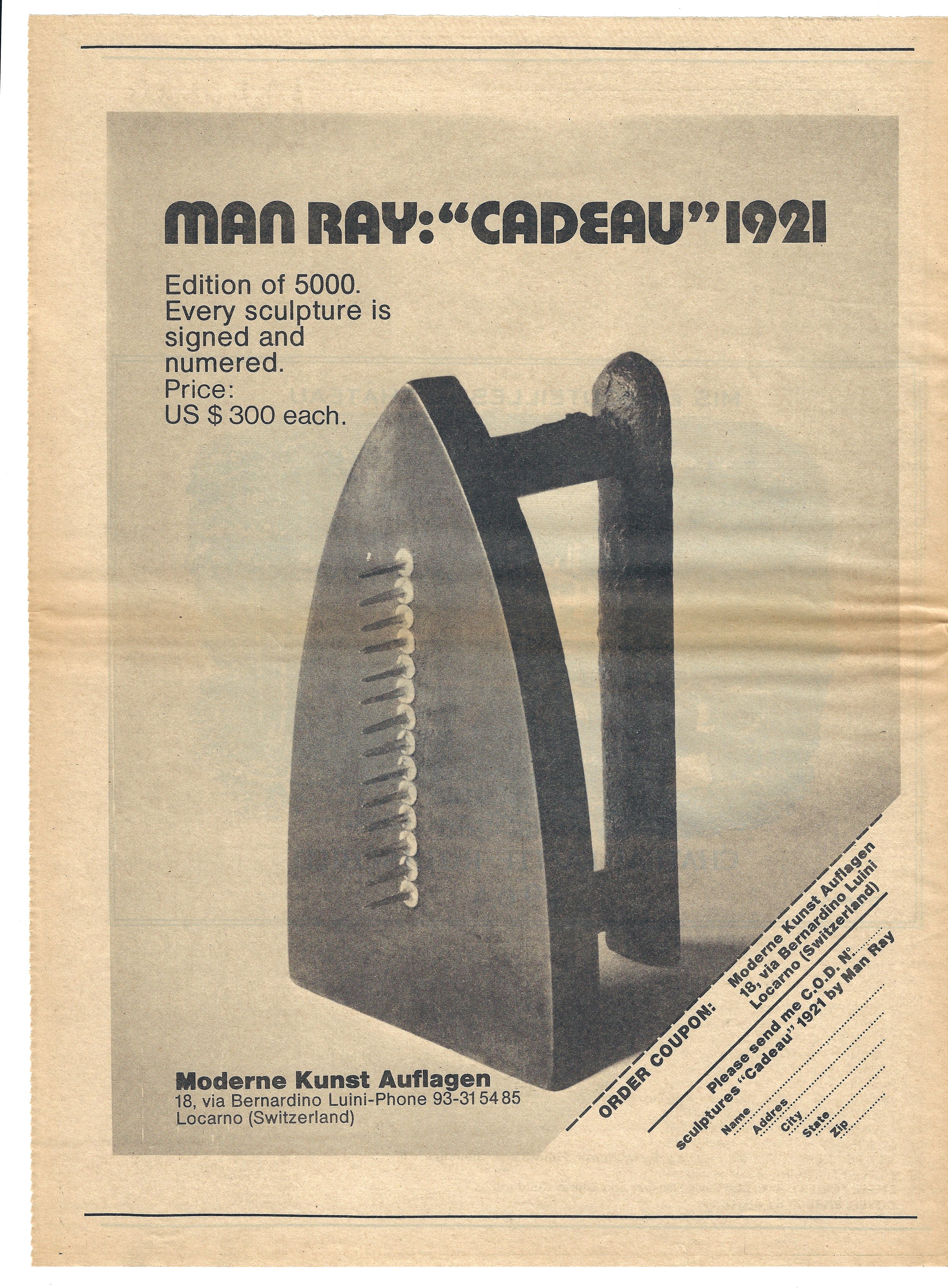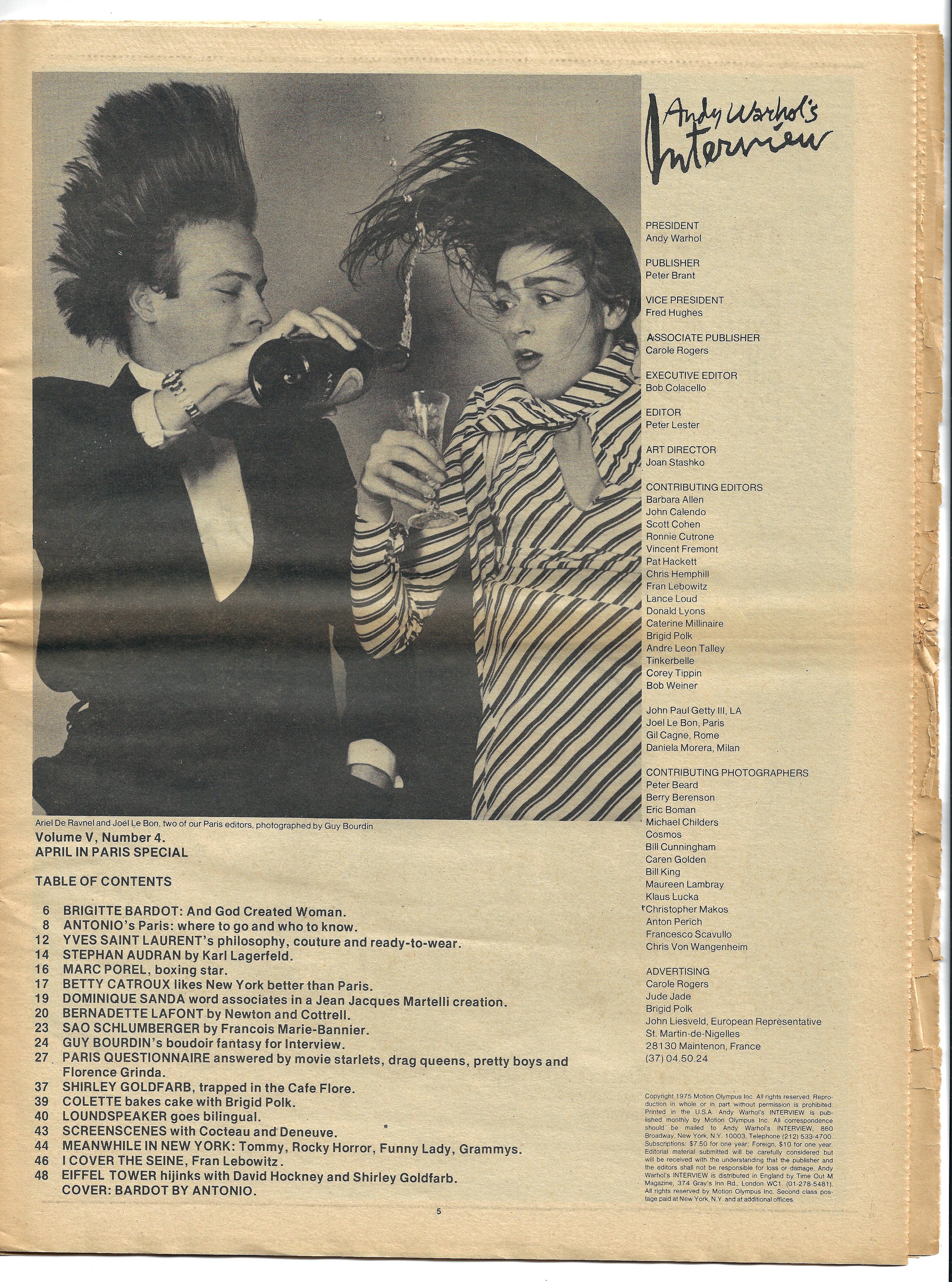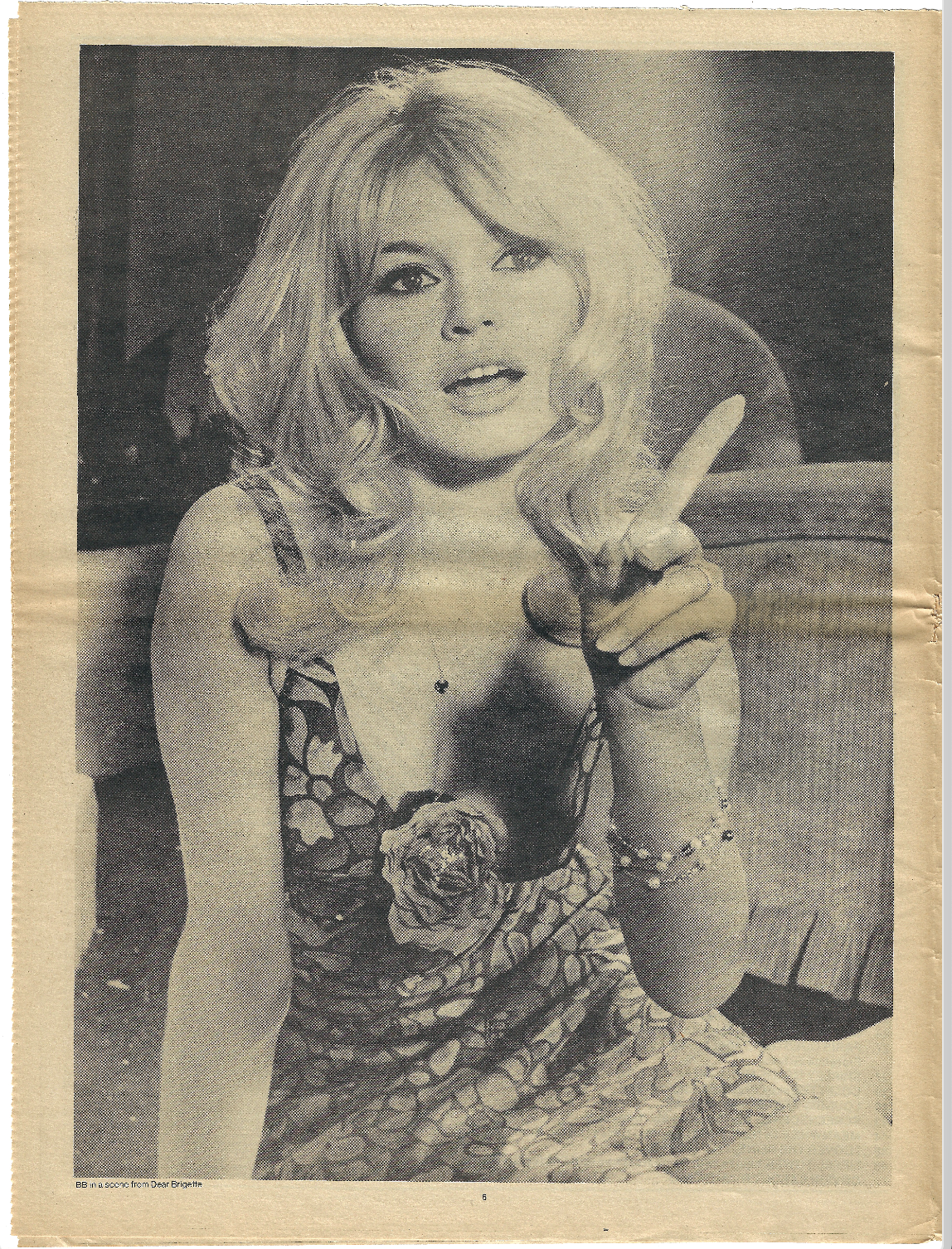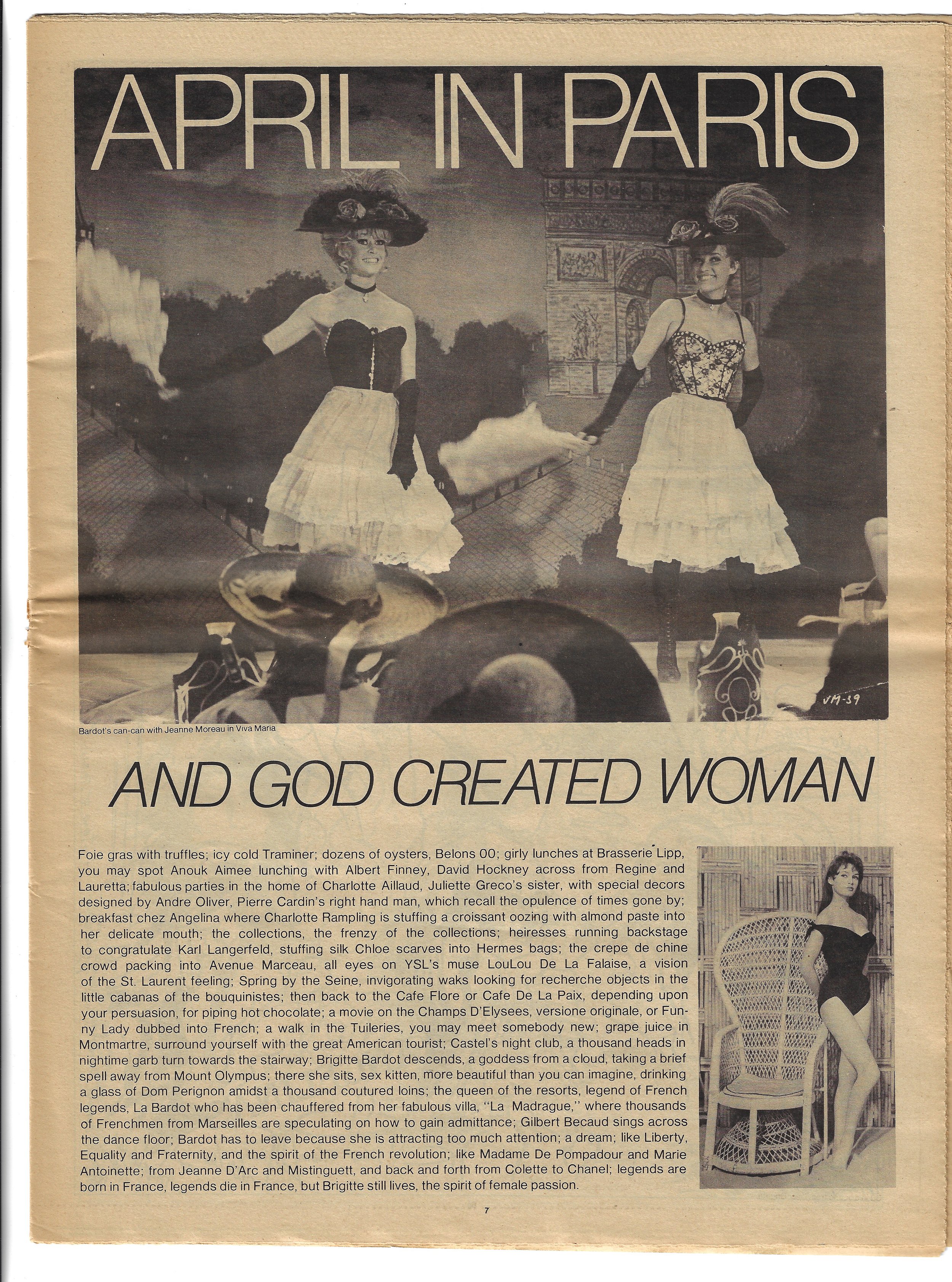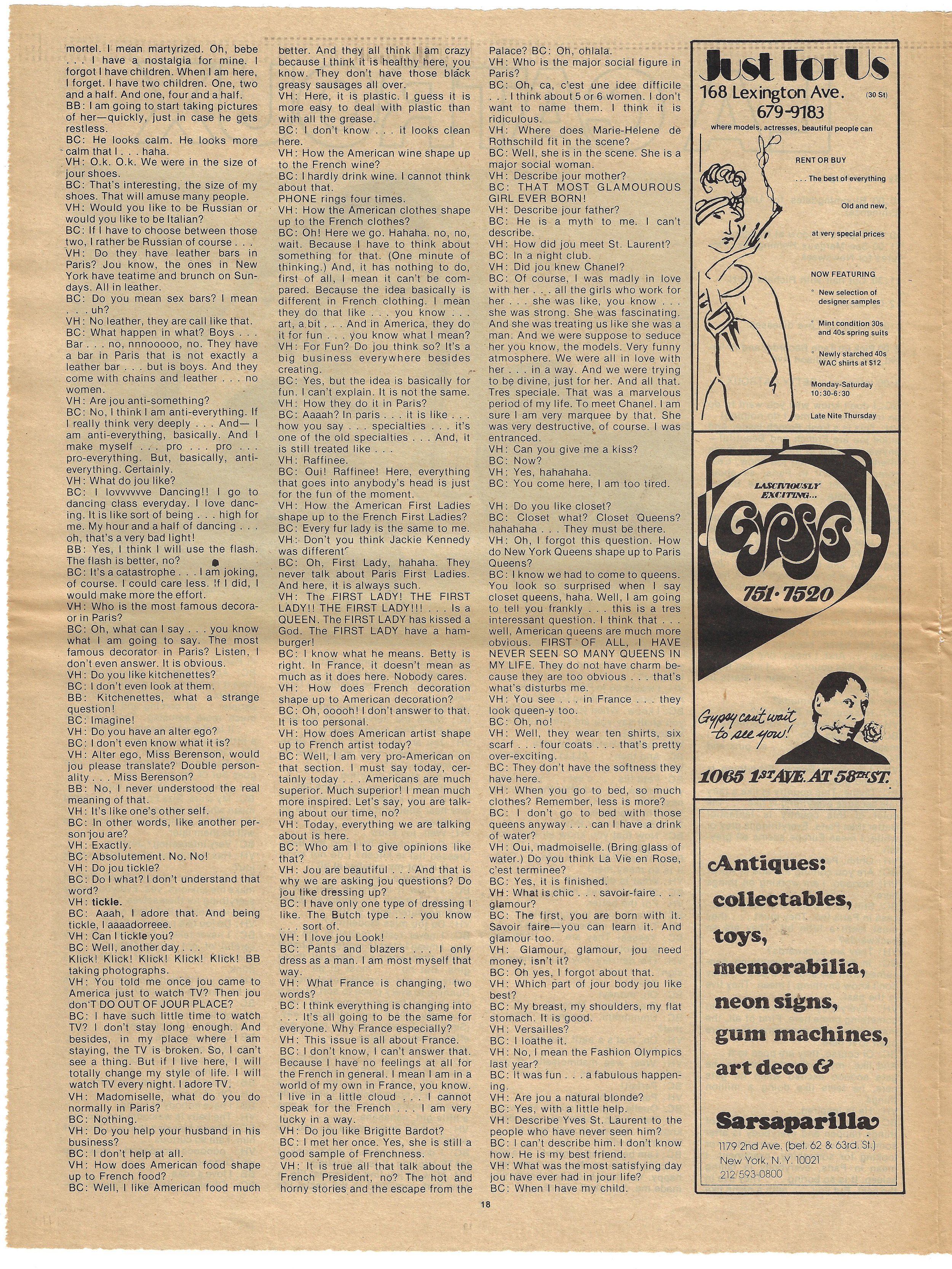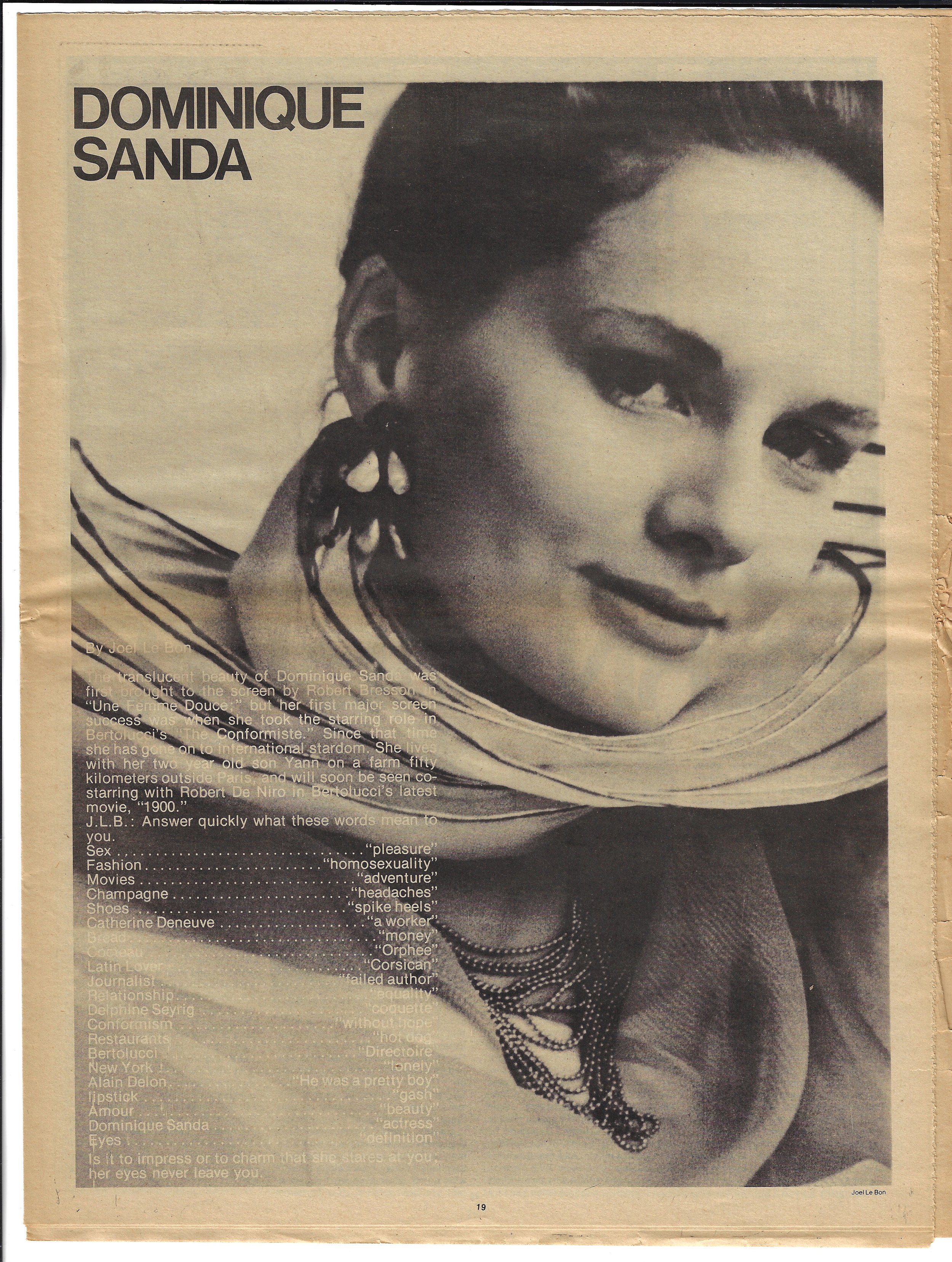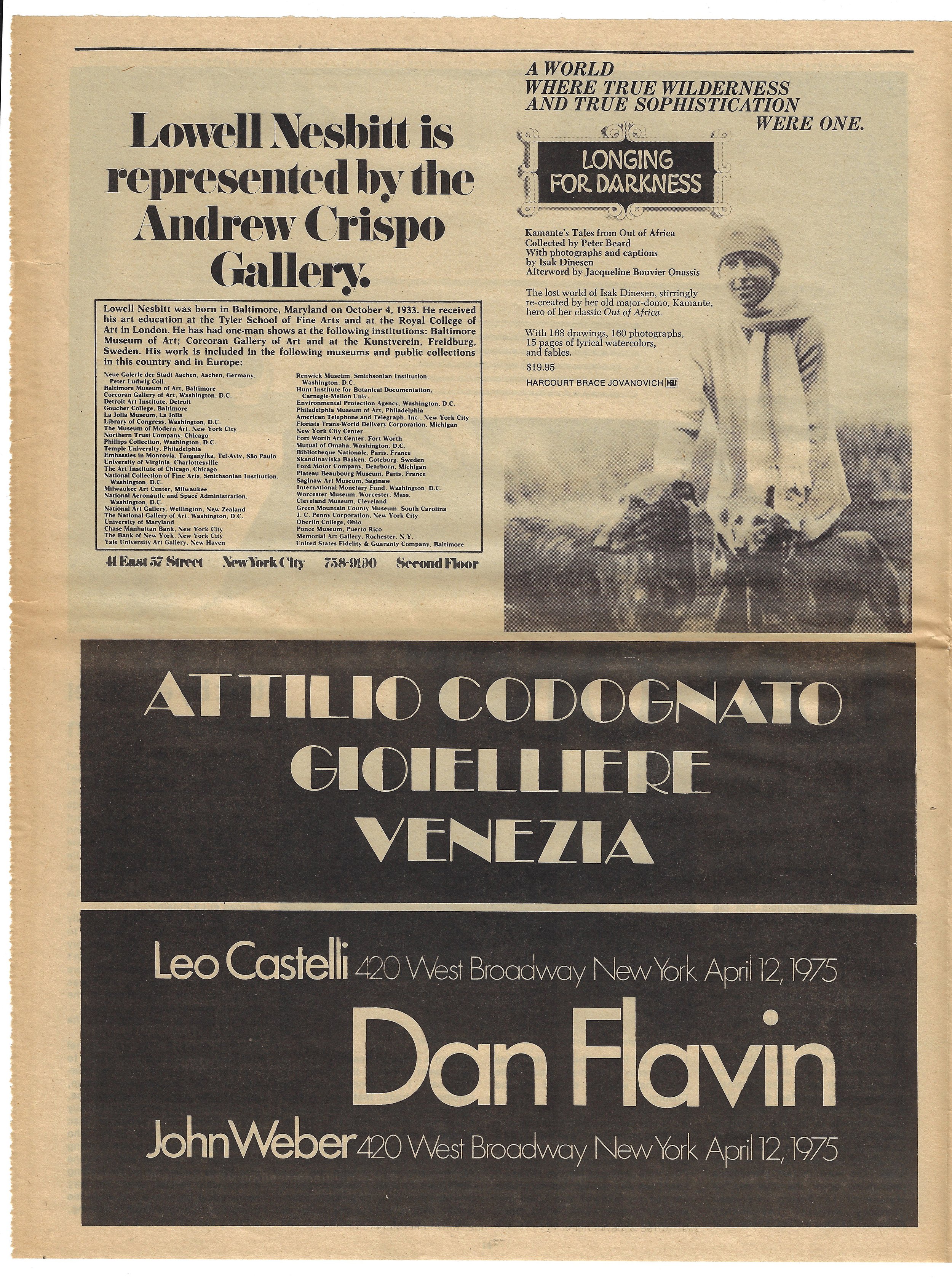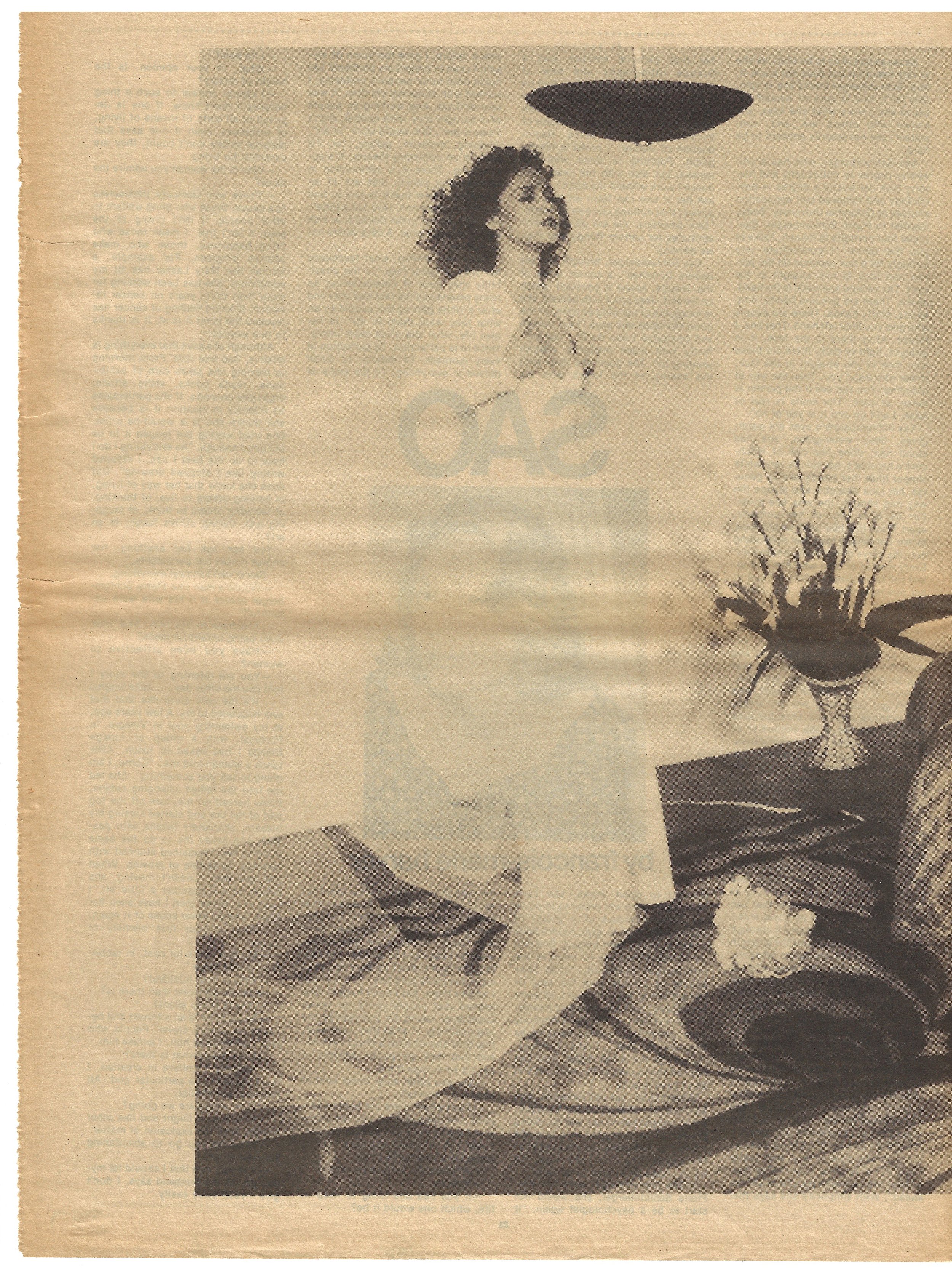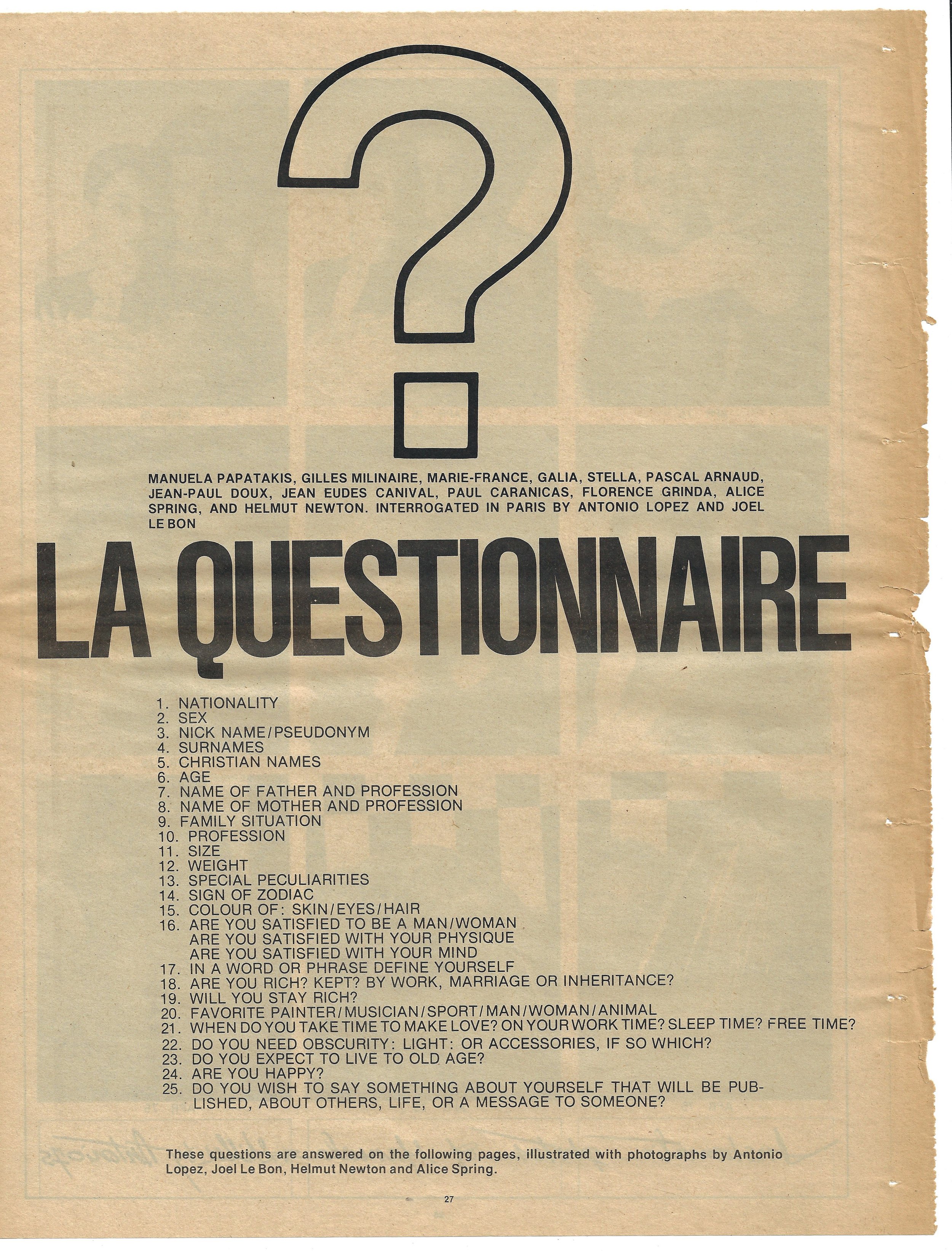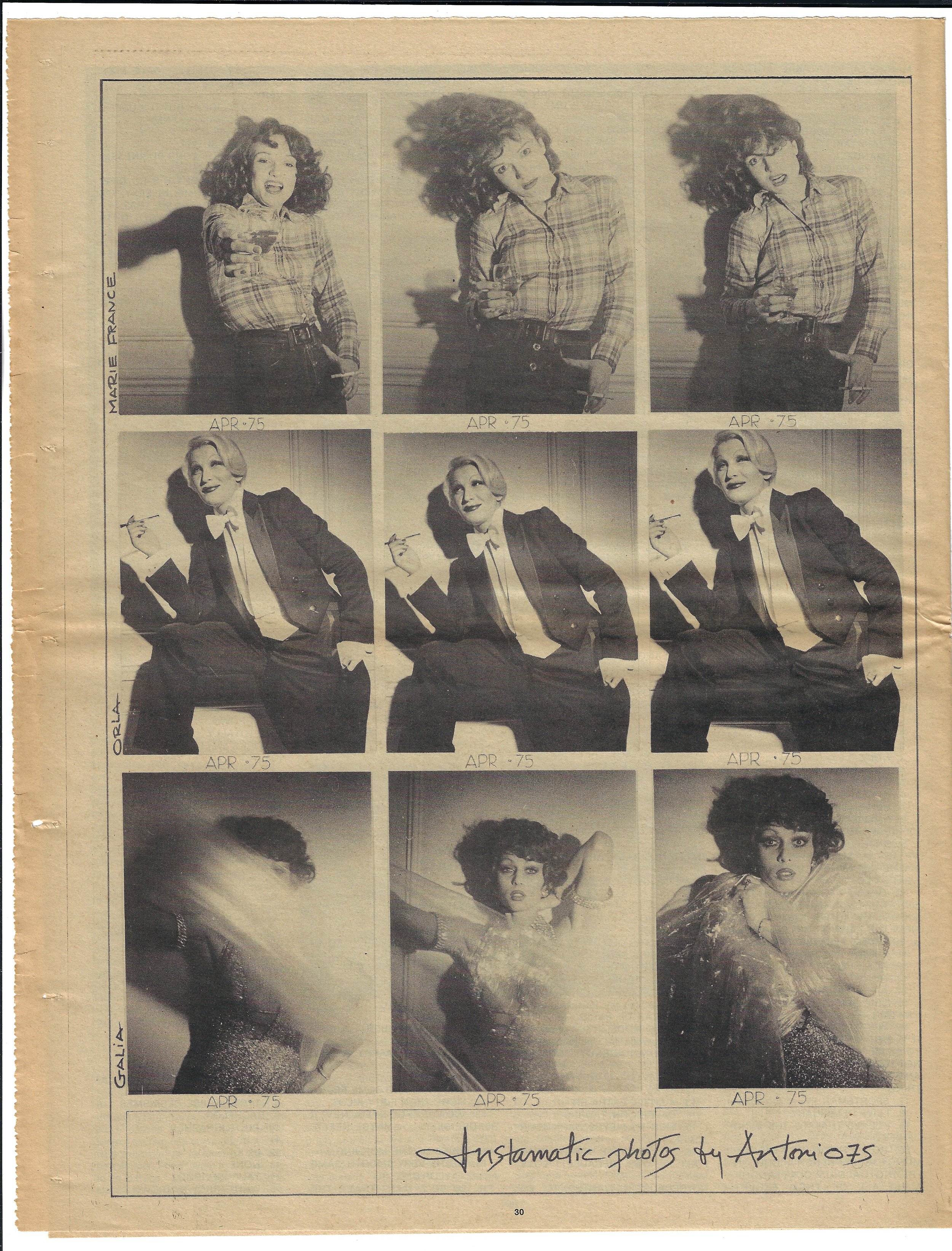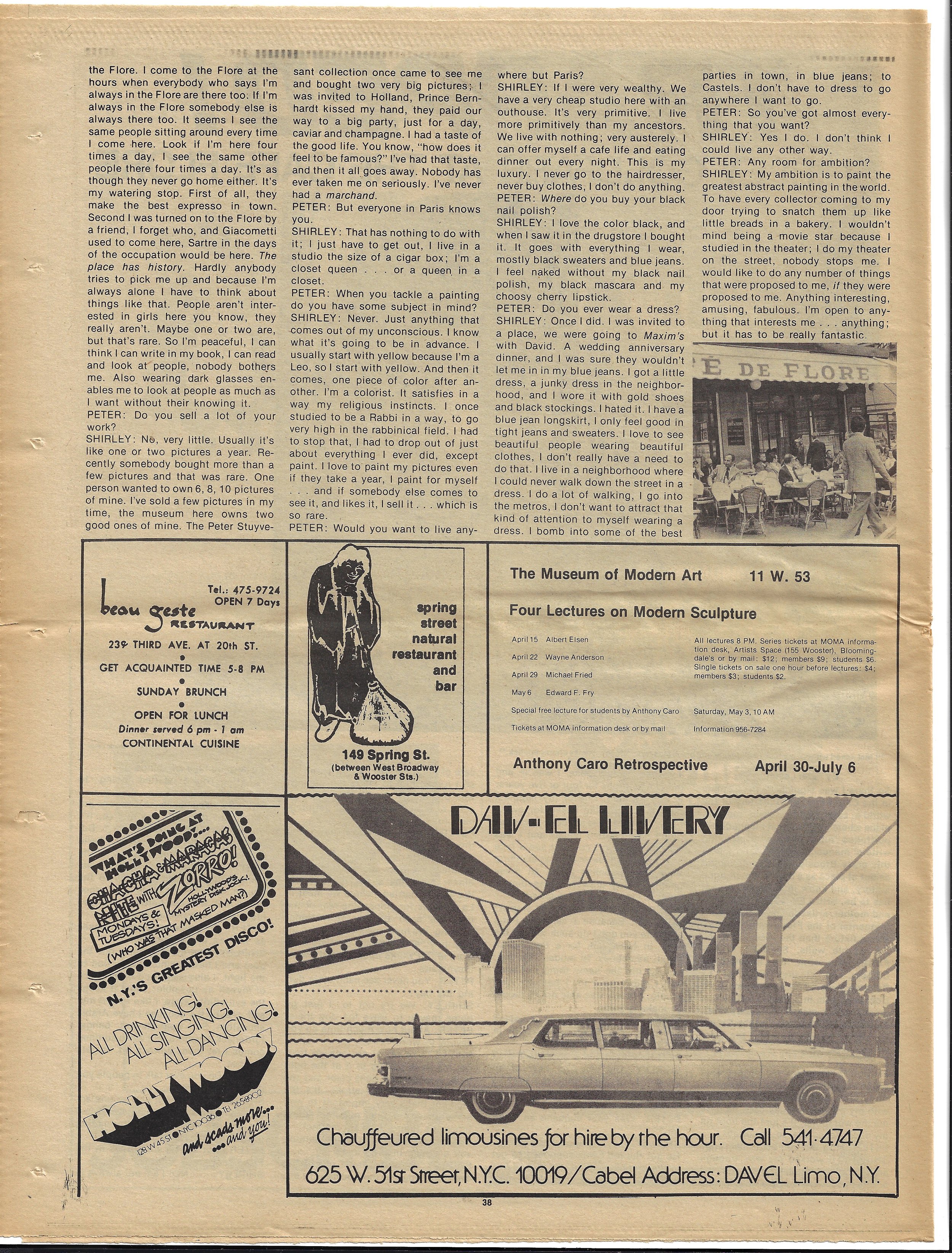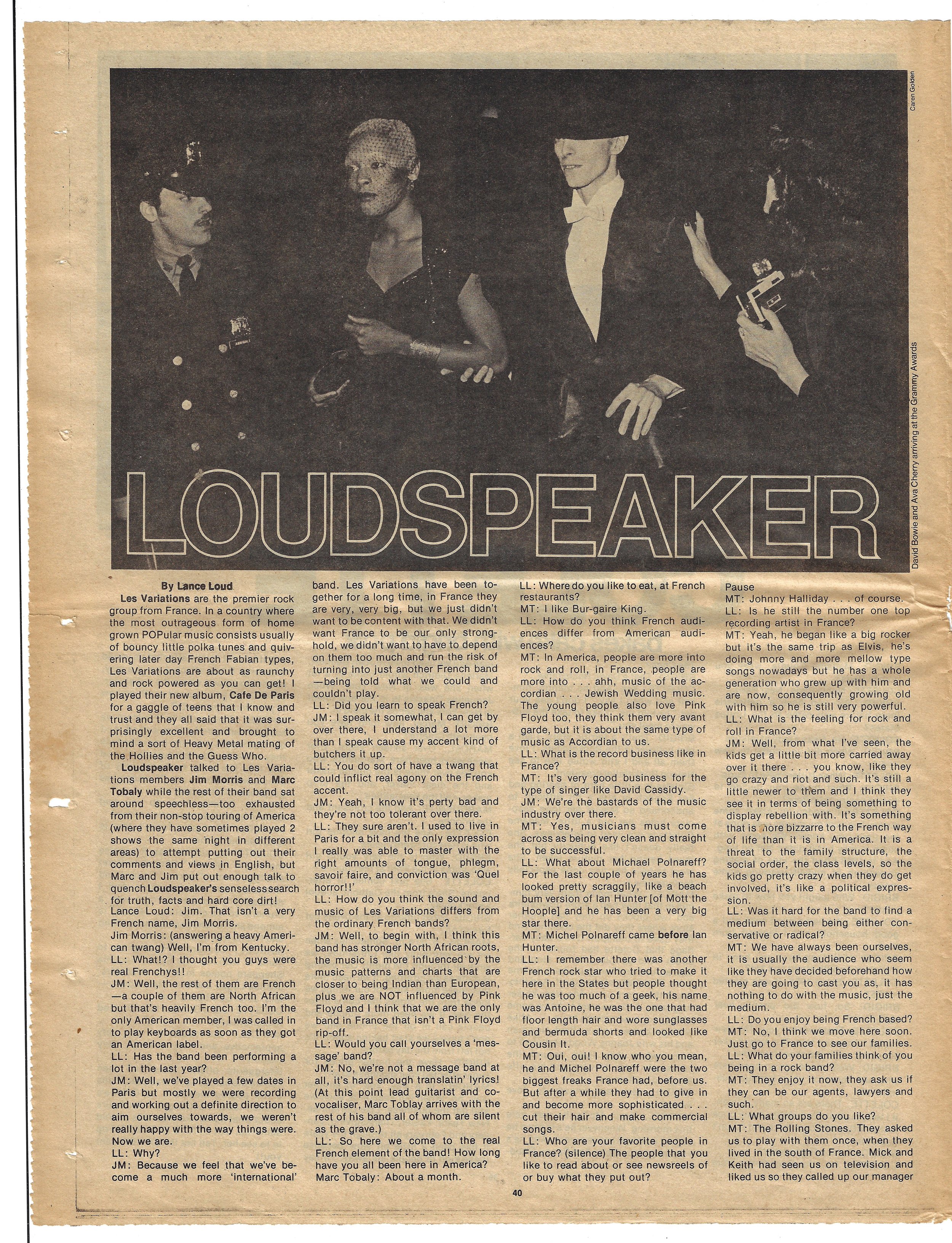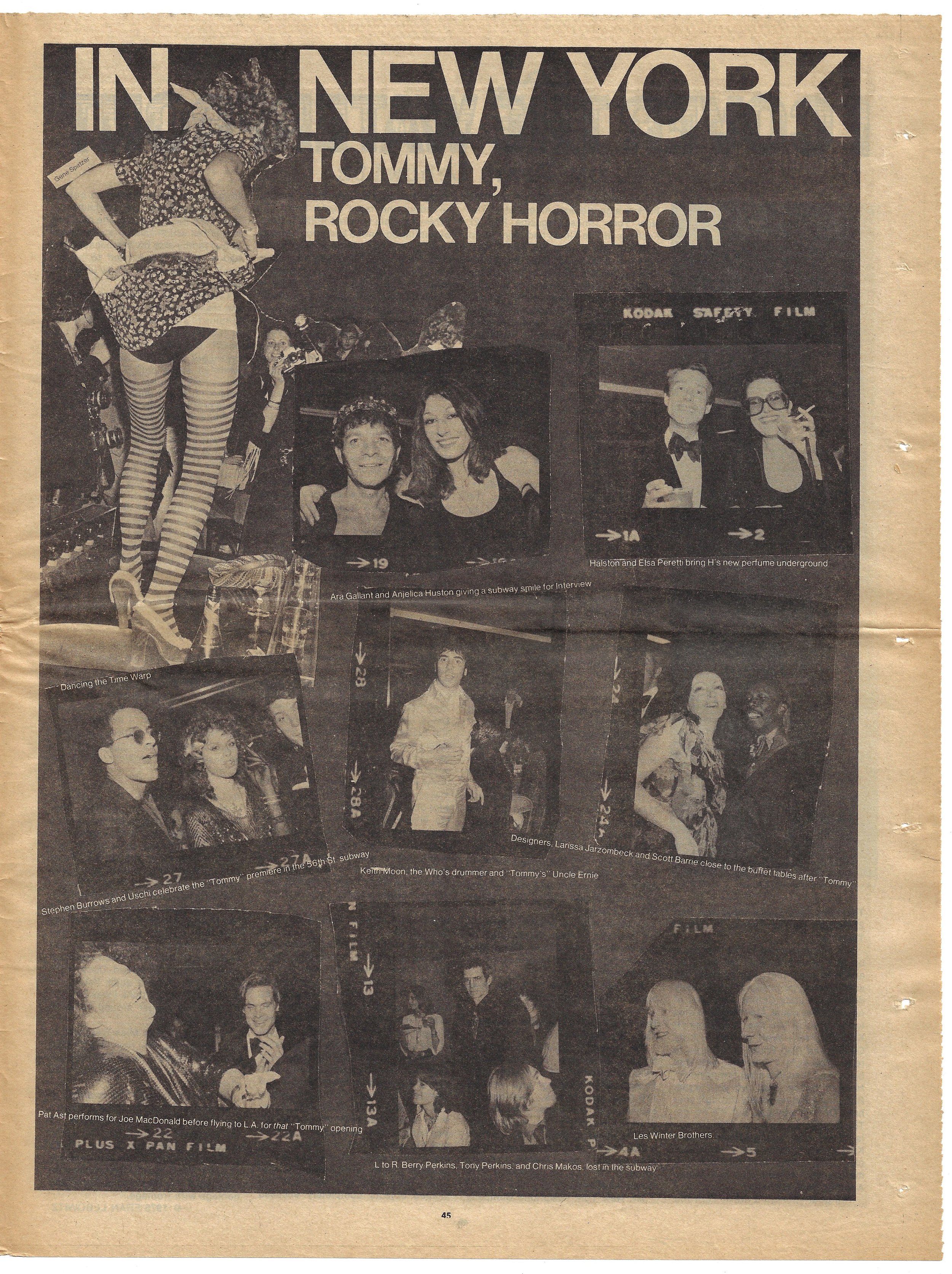April in Paris
Interview Magazine, April 1974. Cover illustration by Antonio and Juan.
In 1974, Antonio and Juan were rounding out their fifth year living in Paris, and their professional lives had taken a global turn as they worked with major publications and fashion houses across Europe and Japan. In the winter of that year, Andy Warhol and his business manager Fred Hughes visited the city, and crossed paths with A & J for a few days of dinners, dancing, and reminiscing.
Because Andy’s career had begun in fashion illustration, he and Antonio shared a mutual appreciation and kinship, as well as a friendship that started a decade prior in New York City. Their careers were on two divergent tracks, but it was during this trip that they decided to collaborate for the very first time on an upcoming issue of Interview Magazine.
Titled April in Paris and released in the springtime of 1975, Antonio and Juan were tasked with creating three influential components: the cover, the Café Society four page illustration spread, and La Questionnaire, an 8-page interview and photo series. They would later go on to guest edit the June 1975 Puerto Rico issue, of which they had full creative control, but this inaugural collaboration laid the groundwork for further projects to come.
Interview Magazine’s Covers
Interview Magazine was founded in 1969 by Andy Warhol and his collaborator and assistant Gerard Malanga. In 1972 it underwent a re-brand, at which point Andy brought in artist Richard Bernstein to redesign the logo and art direct the iconic covers. For the first several years, this consisted of tightly cropped portrait photograph floating on a white background. This later evolved into Bernstein creating the covers himself in his highly recognizable style of brightly colored, seemingly airbrushed, painting portraits.
Left: A 1972 Interview Magazine featuring Liza Minelli, art directed by Richard Bernstein. Right: A 1979 Interview Magazine featuring Liza Minelli, portrait and art directed by Richard Bernstein
Richard Bernstein created almost every Interview Magazine cover from 1972 until 1989. As such, it was extremely unusual for Andy to outsource this to Antonio and Juan, and it was a move that set the tone of the entire publication as a special French edition. A & J decided to feature an illustration of Brigitte Bardot (using Manuella Papatakis, daughter of French film star Anouk Aimée and Greek Director Nikos Papatakis as a stand in model). Her smokey eyes and flowing hair filled the full page, with her face appearing as if on the cover of an envelope with the par avion red, white, and blue detailing framing the edge of the paper. In a departure from the straightforward photography that was en vogue at the time, the April 1975 issue was an art directed fantasy world; it was sex and style direct from the city of lights to America’s mailboxes.
Left: The published cover and corresponding study for Interview Magazine, April 1975. Right: An unpublished alternative cover and corresponding study.
Inside, Andy (along with his art directors and editors) had gathered the major players in Paris’ art, fashion and cultural scene to create an issue that perfectly captured the mid-70s zeitgeist. Yves Saint Laurent put his philosophy of couture and ready to wear into words, Karl Lagerfeld and French Actress Stéphane Audran interview each other on their influences, and cinema critic Donald Lyons waxes poetic on Jean Cocteau.
Café Society
Antonio and Juan’s illustrative influence appeared later in the publication via their Café Society editorial. Published without any text, the four page spread depicted the left bank’s demi-monde: heiresses, busboys, drag queens, bouncers, ballet dancers, and performers were drawn together in a mural inspired artwork that showed the diversity of personalities and the mid 70s glamour that pervaded the city’s clubs and cafes.
The original drawings are no longer in the archives’ holdings, but we have documentation photographs of the works taken by Antonio and Juan in the late 1970s. In them, we can better understand the technique they used, cutting out individual portraits and pasting them together into an overlapping collage.
Photo documentation of the 4 original collage drawings for Café Society
The term café society was coined in 1915 by Maury Henry Biddle Paul, the society columnist for the New York American. Paul recognized a cohort of young, fashionable, well to-do individuals in cosmopolitan cities like New York, Paris and London. They were the Pre-depression era jet set, who attended each other's private dinners, society balls, and vacationed in exotic locations around the world.
By the mid-1970s, Antonio and Juan’s definition of the word came to include a much broader swath of individuals which they encapsulated in this editorial. It was no longer a turn of the century, staid, concept, but a revelatory post civil rights, pre AIDS, disco era celebration.
Juan and Antonio always used live models, and for this series they went to the various restaurants and cafes depicted in the drawings and drew the people as they sat at the table across from them (Café de Flore, Regine’s, La Couple, Angelina’s, etc). However, for the drag shows and dark night clubs (L’Aventure, L’Ange Bleu, Dig-It-Boys etc) Antonio used his new-found love of the Kodak Instamatic camera to create a parallel body of unpublished photographic work of his subjects in situ that he then drew from back at the studio.
La Questionnaire
The final installment of Antonio and Juan’s contribution was the 8-page La Questionnaire editorial. In it, Antonio and Joel Lebon interview Manuela Papatakis, Gilles Milinaire, Marie France, Galia, Stella, Pascal Arnaud, Jean Paul Doux, Jean Eudes Canival, Paul Caranicas, and Florence Grinda with a series of 25 pre-determined questions.
La Questionnarie, Interview Magazine, April 1975
Several of the interviewees were plucked straight from clubs featured in Café Society, and to accompany these subjects, Antonio opted for the first time to feature his photography rather than to draw their likeness.
Following his in-club photo series, Antonio often invited performers back to the studio at 64 Rue de Rennes to continue their portrait sessions. For this story, he and Juan created the 3 x 3 grid compositions seen here, a technique they had begun using in their personal photographic work that was used to evoke a narrative, almost cinematic quality, to each subject.
Kodak Instamatic Grids created for La Questionnaire editorial in Interview Magazine, 1975
Antonio and Juan moved to Paris in 1970 at just 27 and 28 years old, respectively. In the five years they lived there, their professional lives expanded exponentially, they entered a new creative chapter, and the next decade of their lives. Likewise, in that half decade, underground queer subcultures were beginning to bubble up to the mainstream. April is Paris becomes a beautiful tribute to the rich nightlife scene A & J had spent so many of their formative years, and is a celebration to the beauty and diversity which made queer nightlife so sublime.

